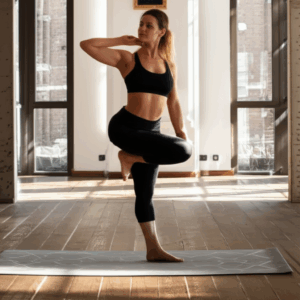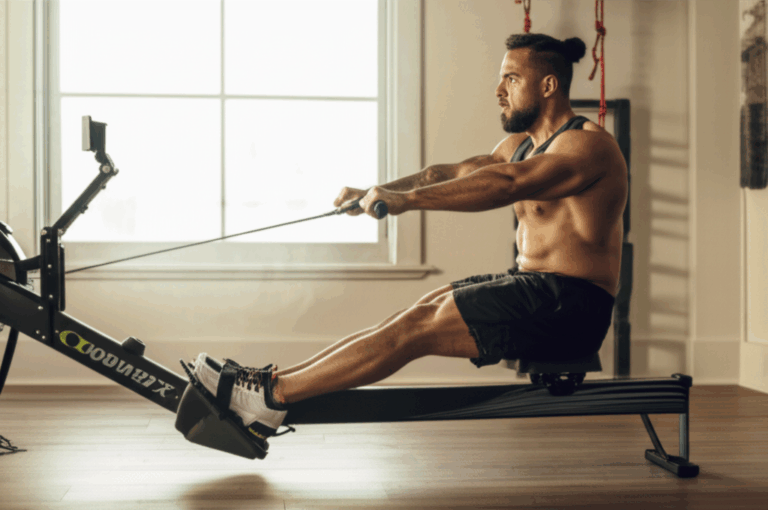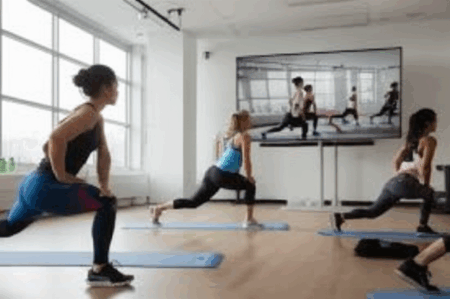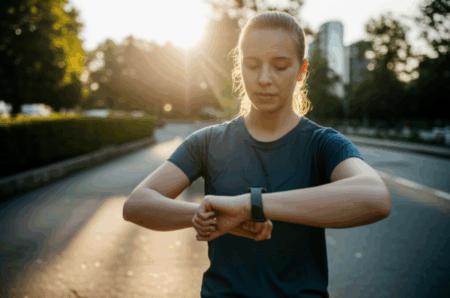For many, the idea of a comprehensive workout conjures images of crowded gyms, elaborate weight racks, and multiple cardio machines. However, a growing number of fitness enthusiasts are discovering a powerful, low-impact alternative that delivers exceptional results right from the comfort of home: the rowing machine. Far from being just an arm workout, the rowing machine is a full-body powerhouse, renowned for its ability to sculpt a strong core, fortify the back, and define the arms, all while offering significant cardiovascular benefits.
If you’ve recently transitioned from the gym to a home rowing routine and are experiencing newfound strength, you’re tapping into one of the most efficient and effective exercises available.
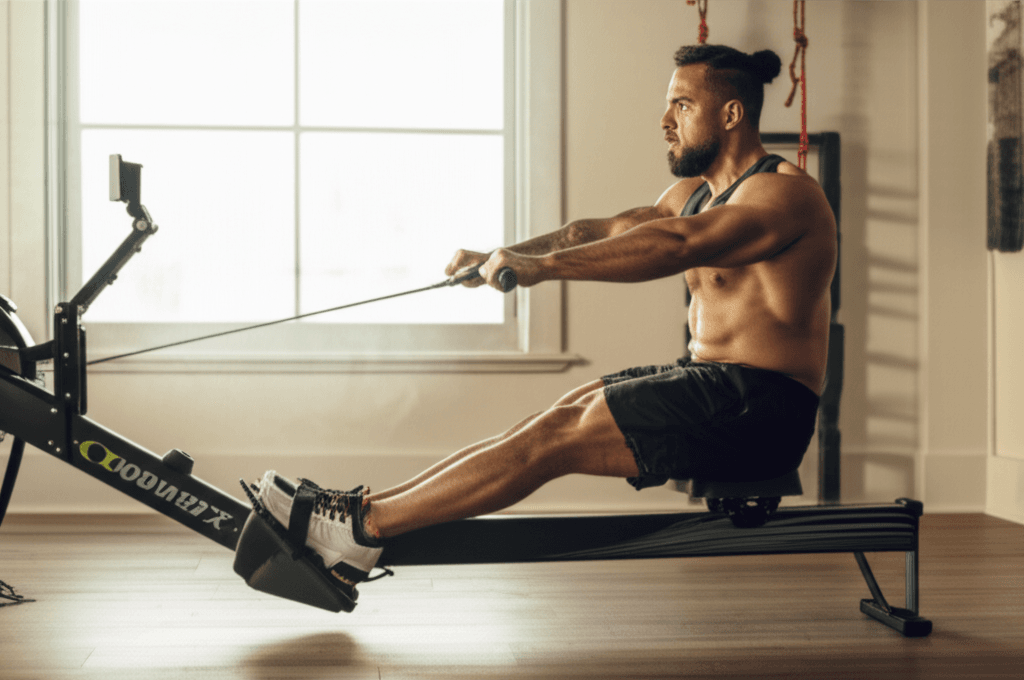
The Full-Body Advantage of Rowing Machine Workouts
A common misconception is that rowing primarily targets the arms. In reality, a rowing machine engages an impressive 86% of your major muscle groups in a single, fluid stroke. This makes it one of the most complete fitness machines, even compared to ellipticals. The power of a rowing stroke is distributed, with approximately 65-75% coming from the legs and 25-35% from the upper body and core.
Strengthening Your Core: The Foundation of Power
A strong core is paramount for almost every physical activity, and the rowing machine excels at developing it. During a rowing stroke, your core muscles, including the rectus abdominis (abs), obliques, and transverse abdominis, are extensively engaged to stabilize your trunk, pelvis, and spine. This continuous engagement prevents excessive movement and ensures an efficient transfer of force from your lower to upper body, helping to maintain proper posture and alignment. A braced core acts like a natural weight belt, protecting your back and enabling a powerful, effective stroke.
Building a Resilient Back: From Lats to Rhomboids
Rowing exerts a significant impact on major back muscle groups, including the latissimus dorsi (lats), rhomboids, and trapezius. As you pull the handle towards your torso, your lats initiate and continue to engage throughout the stroke to facilitate shoulder extension and adduction. Simultaneously, the rhomboids, located between the shoulder blades, work to stabilize the scapulae, ensuring proper shoulder mechanics and posture. The trapezius muscles also assist in shoulder movement and posture. Strengthening these muscles not only enhances upper body strength but also promotes better posture and overall back health, potentially even reducing back pain.
Sculpting Strong Arms and Shoulders: The Pulling Power
While not the primary movers, the arms and shoulders play a crucial role in the rowing movement, contributing to the overall power and efficiency of each stroke. As you pull the handle towards your body, your biceps contract to flex the elbows. Simultaneously, your shoulder muscles, including the deltoids (anterior and medial) and rotator cuff muscles, engage to stabilize the shoulder joints and facilitate shoulder extension. Forearms are also utilized during both the drive and recovery phases of the stroke.

Beyond Core, Back, and Arms: Comprehensive Benefits
The benefits of a rowing machine extend far beyond just these muscle groups:
- Leg Powerhouse: The drive phase of the stroke is predominantly leg-driven, engaging your quadriceps, hamstrings, glutes, and calves, building significant lower body strength.
- Cardiovascular Health: Rowing is an excellent cardiovascular exercise that elevates your heart rate, burns calories, and improves endurance. It can be as effective for calorie burning as other cardio machines like treadmills, with less impact.
- Low-Impact Exercise: Unlike high-impact activities such as running, rowing is gentle on your joints, including hips and knees, making it suitable for a wide range of fitness levels and those with joint pain or issues.
- Endurance and Power: Rowing builds both muscular and cardiovascular endurance, and the explosive leg drive develops power.
- Mental Engagement: Proper rowing form requires concentration, offering a meditative quality once the technique becomes second nature. It can also be a great stress reliever.
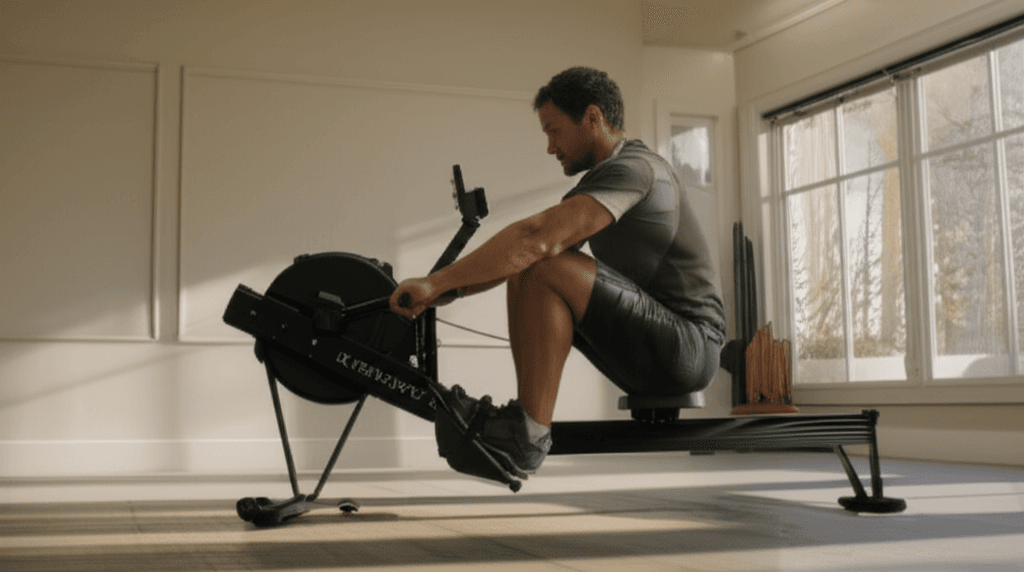
Home Rowing vs. Gym Workouts: Convenience Meets Efficacy
The user’s experience highlights a significant advantage of home rowing: convenience. Owning a rowing machine means no travel time, no waiting for equipment, and the flexibility to work out whenever suits your schedule. Many modern rowing machines are also designed to be foldable and stowable, making them an excellent addition to home gyms, even in smaller spaces. While a gym offers a variety of equipment, a rowing machine alone provides a comprehensive full-body workout that rivals the efficacy of many multi-gym setups for endurance and calorie burning.
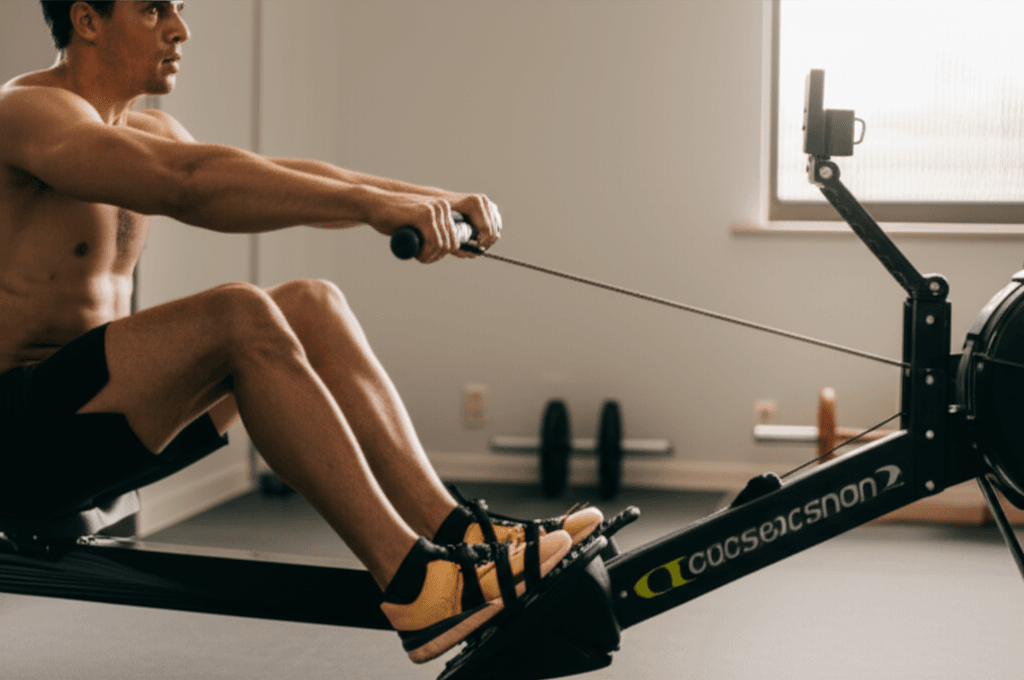
Maximizing Your Home Rowing Machine Workout
To ensure you’re harnessing the full potential of your rowing machine for core, back, and arm strength, focus on proper technique:
- The Catch: Start with your shins vertical, arms extended, and core braced. Your lats, shoulders, arms, and glutes are engaged here.
- The Drive: This is the most powerful part of the stroke, driven primarily by your legs. Push strongly with your feet, engaging your quads, hamstrings, and glutes. As your legs extend, lean back slightly from the hips and pull the handle towards your chest, engaging your back and biceps. Your core remains braced throughout to stabilize your body.
- The Finish: Legs are fully extended, you’re leaning back slightly, and the handle is at your chest. Your biceps, shoulders, lats, glutes, quads, and abdominals are active.
- The Recovery: Extend your arms, then lean forward from the hips, allowing your knees to bend as you return to the starting “catch” position. Hamstrings, glutes, calves, and triceps are engaged.
Remember to focus on a smooth, fluid motion rather than rushing. A good rhythm often involves a 1:2 or 1:3 ratio, where the drive is quicker than the recovery.
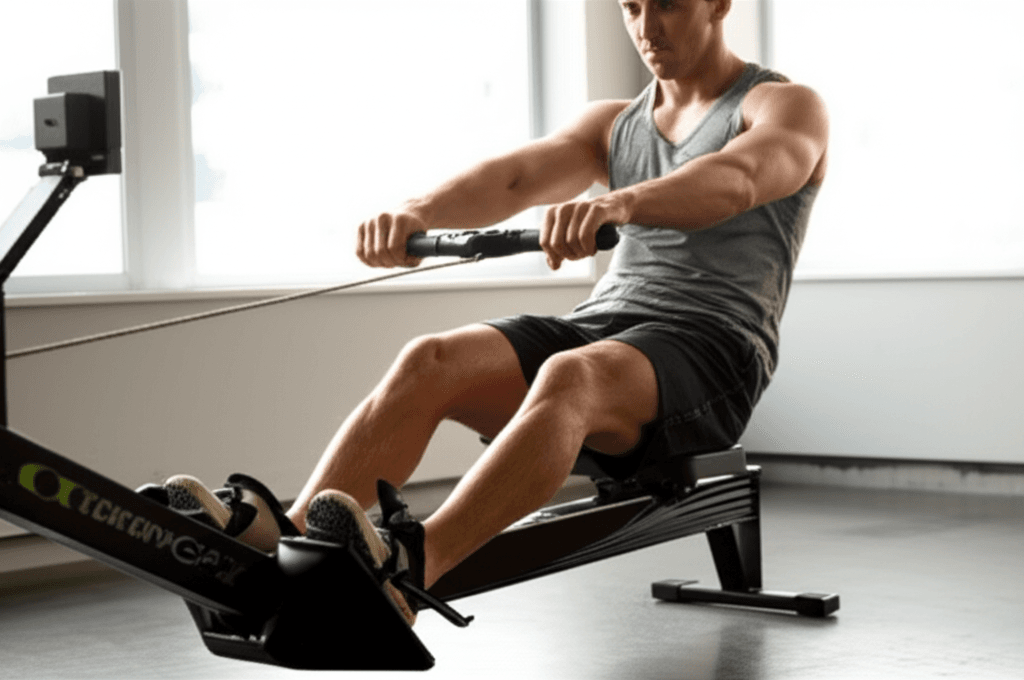
Sample Rowing Machine Workouts for Strength and Endurance
Whether you’re a beginner or an experienced rower, varied workouts can keep your routine engaging and effective.
- Beginner Workout: A 5-minute warm-up, followed by 10 minutes of steady rowing at a moderate pace, and a 5-minute cool-down. Start with 2-3 sessions per week.
- Interval Training: Incorporate high-intensity intervals for improved cardiovascular fitness and calorie burn. For example, row for 1 minute at high intensity, followed by 1 minute of low-intensity rowing, repeating 8-10 times.
- Strength and Cardio Blend: Some workouts combine rowing with bodyweight exercises like squat jumps, lunge jumps, and push-ups for a comprehensive strength and cardio challenge.
The transformation you’ve experienced, swapping the gym for a home rowing machine and feeling your core, back, and arms strengthen, is a testament to the effectiveness of this versatile equipment. The rowing machine truly is a remarkable tool for achieving a full-body, low-impact workout that builds both strength and endurance, making it an ideal choice for a home fitness routine.


